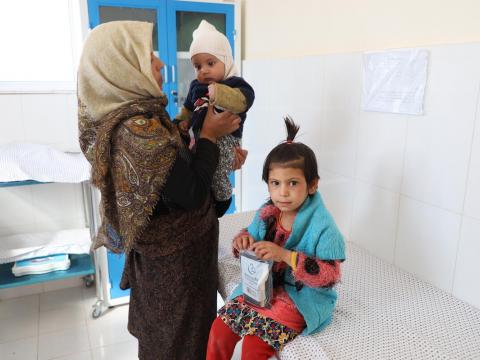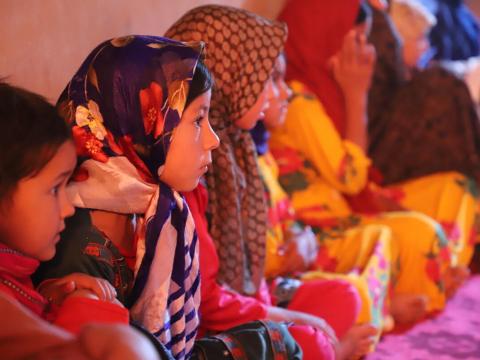
Afghanistan’s children need us more than ever
By Asuntha Charles
Governments promised US$3.3 billion for Afghanistan last this week – a tenth of the amount Americans are spending on Thanksgiving, much less than half what Britons will spend in Black Friday sales, or a quarter of what Australians will spend on Christmas this year. And barely 2% of the financial cost of the Afghanistan war[i]. Is it a sign that the donors are fatigued by the situation in Afghanistan? If so then how do you think Afghans who live in poverty and hunger feel?
I am not suggesting everyone puts their money towards the needs of children in Afghanistan, rather than treating themselves, and contributing to economies at the end of a long year for everyone. But I can’t help but ask if we have lost our perspective?
While we welcome the important commitments that were made, the simple truth is it’s not going to be enough. It is simply not enough to meet existing needs and prevent a deepening crisis in Afghanistan, particularly for children who will continue to bear the overwhelming responsibility for conditions not of their making including conflict and insecurity, displacement, and the long-term consequences of COVID-19.
It’s not all about money, of course. All I hope for is a fully inclusive peace process owned by Afghan men and women, which is possible – everyone I have met in my decade living and working here desperately wants peace – and for this, donors must commit to funding long-term, sustainable development solutions, as well as funding the humanitarian crisis in front of us.
New research from World Vision reveals that almost half of Afghan families have been forced to send their children out to work during the pandemic. At the start of 2020, a quarter of children between the ages of five and 14 were engaged in work, and some 3.7 million were already out of school. But these numbers have now surged, with more children being forced into daily labour or begging on the streets to help keep their families afloat.
Boys and girls forced into dangerous and exploitative work are at risk of beatings and harassment as well as being exposed to the virus. Child marriages, already painfully high in Afghanistan, are on the rise as parents struggle to feed their families and desperately search to secure their children’s futures. Hunger is increasing; almost 9/10 Afghan families recently surveyed by our teams needed help to pay for food. As one 13-year-old girl told our researchers: “If COVID-19 doesn’t kill them, poverty and hunger surely will.” She’s not wrong – we are expecting widespread acute food insecurity with 42% of people affected in the next six months alone.
Typically when we speak of Afghanistan we think of conflict, instability, displacement, and poverty - this reduces one essential point; the resilience and strength of Afghans both in Afghanistan and those displaced by decades of conflict. I love this country because it welcomes you from the moment you step off the plane. It’s a country whose people – men and women – show you respect and warmth; who have endured so much, and yet still believe in peace. Where the beauty of the landscape can take your breath away. It’s a country I call my second home. But its children are at breaking point.
The aim of the Conference was to promote sustainable development, prosperity and peace. A failure to invest now will undermine any effort for sustained change.
Children represent the single greatest assets to achieve peace, recovery and prosperity. In the decade I have worked in and outside this beautiful, complex country, I have seen that though there may be momentous challenges, Afghanistan is a nation trying to move forward. Surely we owe its children the chance to do exactly this?
The international community must not forget these children, who are in dire need of physical and psychological support to recover and educational support to rebuild their lives. They have the right to do so in safety without fear of further harm – we need to do much better than before.
Asuntha is the National Director of World Vision Afghanistan.
[i] US costs in Afghanistan conflict US$978 billion https://www.thebalance.com/cost-of-afghanistan-war-timeline-economic-impact-4122493 and UK $50 billion https://www.nam.ac.uk/explore/war-afghanistan

